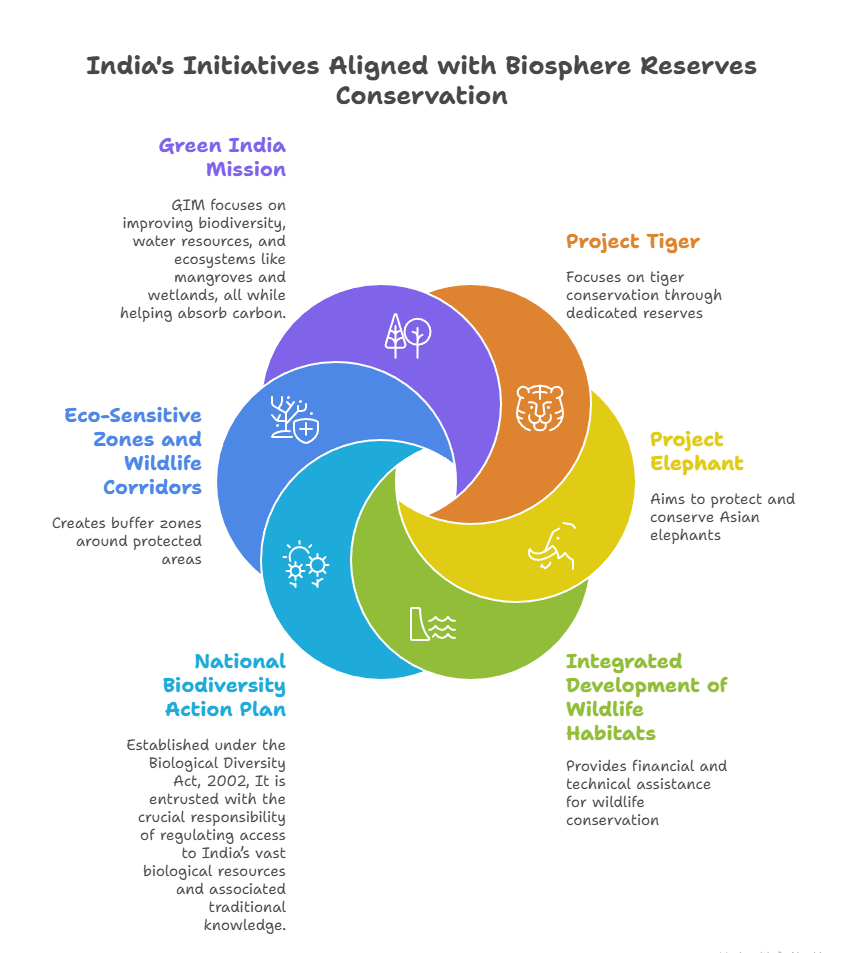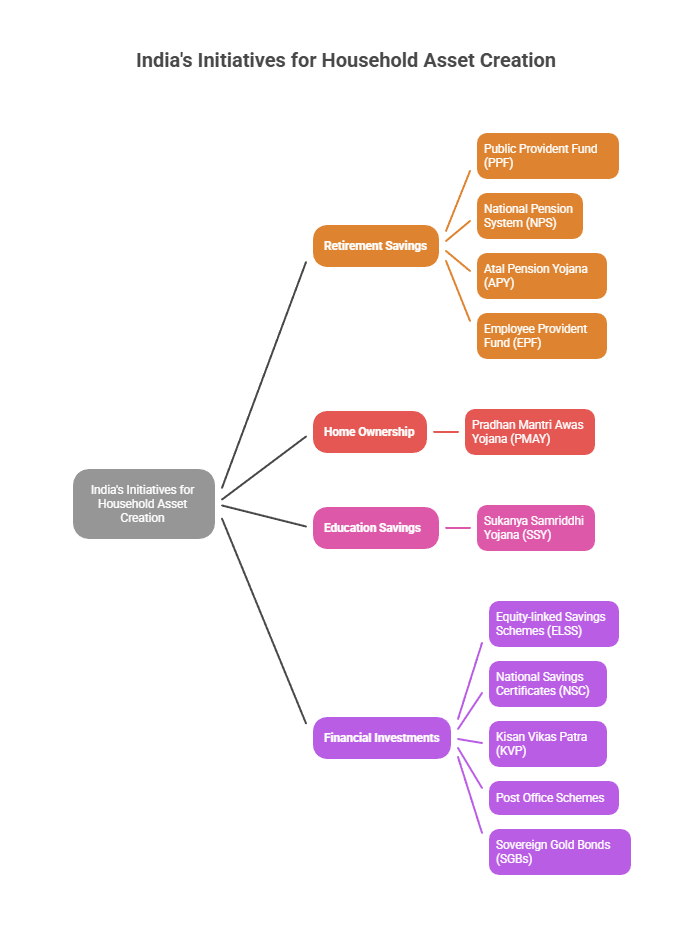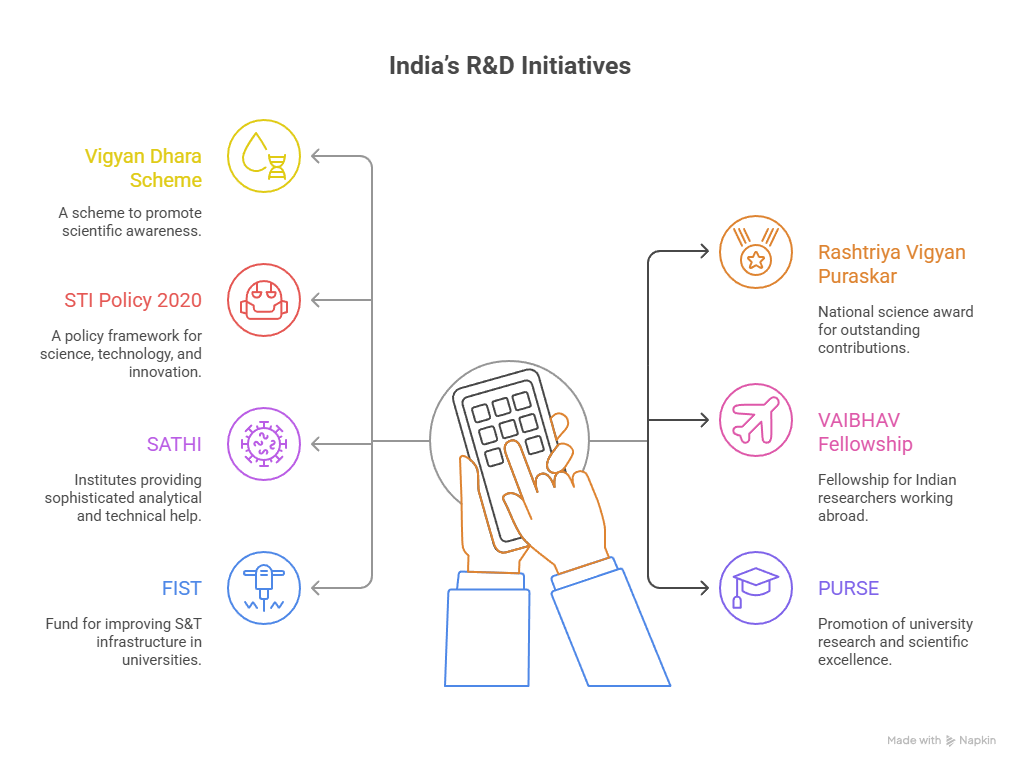Tractor Emission Norms (TREM)
Farmers’ organisations have opposed the Union government’s proposal to implement Tractor Emission Norms (TREM) Stage V for tractors from 1st October 2026, urging that the rules would force farmers to buy new tractors, increasing debt and economic hardship.
- TREM: These are pollution-control standards set by the government to regulate and reduce harmful exhaust emissions from agricultural tractors and farm machinery.
- They are similar to Bharat Stage (BS) norms for other vehicles but are specifically designed for agricultural equipment to limit pollutants like NOx, particulate matter (PM), hydrocarbons, and carbon monoxide.
- TREM Stages: India introduced tractor emission norms in 1999, followed by Bharat (Trem) Stage II in 2003 based on the Expert Committee on Auto Fuel Policy (Mashelkar Committee, 2002), and Bharat (Trem) Stage -III in 2005.
- TREM-IIIA (2010–11) brought horsepower (HP)-based limits, and TREM-IV was implemented in 2023 for tractors above 50 HP to further curb emissions.
- Impact: TREM-IV and V norms for tractors above 50 HP could increase tractor prices by 20–25%, adding pressure on small farmers.
- Farmers insist TREM-V should apply only to tractors above 70 HP, mostly used for non-agricultural work.
| Read more: Vehicular Emissions in India |
Guru Nanak Jayanti 2025: Celebrating the Birth of the Founder of Sikhism
For Prelims: Guru Nanak Dev, Sikhism, Sikh Takhts, Khalsa, Panj Pyare
For Mains: Ancient Indian History, Guru Nanak Dev and his teachings, Sikhism
Why in News?
Guru Nanak Jayanti, also known as Gurpurab, is celebrated on 5th November 2025, marking the 556th birth anniversary of Guru Nanak Dev (1469–1539). The day commemorates the founder of Sikhism, celebrating his message of equality, and compassion.
Guru Nanak Jayanti
- It is celebrated on the day of Kartik Poornima, which is the fifteenth lunar day in the month of Kartik according to the Hindu calendar, and usually falls in the month of November by the Gregorian calendar.
- A day before Gurpurab, devotees take part in Nagar Kirtan processions led by the Panj Pyare carrying the triangular Sikh flag, the Nishan Sahib, with the Guru Granth Sahib placed in a palanquin, accompanied by hymn singing and Gatka martial arts displays.
- On Guru Nanak Jayanti, processions are followed by Langar at Gurdwaras, where volunteers serve free meals to all.
- Langar, from a Persian word for “almshouse,” is the Sikh community kitchen that feeds anyone reflecting equality and service.
Who was Guru Nanak Dev Ji?
- About: Guru Nanak Dev Ji was born in 1469 at Talwandi (now Nankana Sahib, Pakistan) and attained spiritual enlightenment in 1496 at Sultanpur Lodhi.
- As the founder of Sikhism and the first of the ten Sikh Gurus, he rejected caste discrimination, ritualism, and idol worship, advocating devotion to one formless God.
- He passed away in 1539, after appointing Guru Angad as his successor.
- Key Teachings of Guru Nanak Dev Ji:
- Oneness of God (Ik Onkar): He taught that there is only one, formless, eternal God who is present in all beings.
- True worship lies in remembering God with sincerity rather than rituals.
- Equality of All Humans: He rejected caste, untouchability, and religious hierarchy. All people, regardless of identity, share the same divine light.
- Three Pillars of Sikhism: Guru Nanak formalised the three pillars of Sikhism (Naam Japna, Kirat Karna, and Vand Chhakna) to promote righteous living, dignity of labour, and social equality.
- Naam Japna: Devote constant remembrance of God’s name to overcome the five evils (lust, anger, greed, attachment, and ego).
- Kirat Karna: Work hard and earn a livelihood through honest, ethical means to avoid exploitation and deceit.
- Vand Chhakna: Share what you have with those in need. Wealth is God’s gift and must be used for the welfare of society.
- Sarbat da Bhala (Welfare of All): He thought to pray for the wellbeing of everyone, regardless of religion, caste, gender, or background.
- Oneness of God (Ik Onkar): He taught that there is only one, formless, eternal God who is present in all beings.
What is Sikhism?
- About: It is a monotheistic religion founded by Guru Nanak Dev Ji in the 15th century in Punjab.
- The word Sikh means disciple, reflecting a life guided by teachings of the Sikh Gurus.
- It grew through the teachings of ten Gurus and was shaped by the Bhakti and Sufi traditions.
- Sikhism focuses on devotion to one God, ethical living, and equality.
- Khalsa: It comprises Sikhs who undergo the baptism ceremony, follow the Sikh code of conduct, and wear the Five Ks (Kesh (uncut hair), Kangha (wooden comb), Kara (iron bracelet), Kachera (cotton undergarment), and Kirpan (ceremonial dagger)).
- Sacred Texts: The Guru Granth Sahib, written in Gurmukhi script, is the eternal Sikh scripture containing hymns of Sikh Gurus and saints.
- The Dasam Granth, linked to Guru Gobind Singh, is considered a supplementary text.
- Institutions of Sikhism:
- Gurdwara The Sikh place of worship, open to all regardless of caste, gender, or religion. It serves as a centre for prayer, community service, and learning.
- Takhts (Seats of Authority): The five Sikh Takhts guide religious and temporal affairs, with the Akal Takht in Amritsar being the highest seat of authority.
- The others include Takht Sri Keshgarh Sahib (Himachal Pradesh), linked to the founding of the Khalsa.
- Takht Sri Patna Sahib (Bihar), the birthplace of Guru Gobind Singh.
- Takht Sachkhand Hazur Sahib (Maharashtra), where Guru Gobind Singh was cremated.
- Takht Sri Damdama Sahib (Punjab), where he finalized the Guru Granth Sahib.
- Shiromani Gurdwara Parbandhak Committee (SGPC): Apex elected body managing major Gurdwaras and Sikh religious affairs, headquartered in Amritsar.
- Khalsa Panth: It is the collective body of the Sikh community, the institutional fraternity that represents and manages Sikh religious affairs.
- Gurudwara Reform Movement: The Gurdwara Reform (Akali) Movement began in 1920 to free Sikh shrines from corrupt, British-backed mahants.
- It led to the creation of the SGPC in 1920 and culminated in the Sikh Gurdwaras Act, 1925, granting Sikhs legal control over their Gurdwaras.
How did Guru Nanak’s Teachings Contribute to Societal Transformation?
- Social Equality & Inclusion: Guru Nanak challenged caste discrimination and asserted that dignity belongs to every individual. This helped weaken rigid social hierarchies.
- Women’s Empowerment: He was a strong advocate for gender equality and raised his voice against discrimination against women.
- Institutional Reforms: Guru Nanak strengthened social equality through key institutions.
- Langar offered a free community kitchen where everyone could eat without discrimination.
- Pangat encouraged people to sit together and share meals as equals.
- Sangat brought people together for shared learning, spiritual growth, and collective decision-making.
- Ethical Socio-Economic Order: He encouraged honesty in work and fair distribution of wealth through dasvandh (donating a tenth of one’s income). This promoted dignity of labour and reduced exploitation.
- Interfaith Dialogue & Harmony: Guru Nanak travelled widely across India and beyond, engaging with Hindus, Muslims, Sufis, Yogis, and others, promoting peaceful coexistence.
- Cultural & Spiritual Integration: His teachings blended elements of Bhakti and Sufi movements, promoting spirituality rooted in love, truth, and humanity.
Conclusion
Guru Nanak Jayanti honours Guru Nanak Dev Ji’s teachings of one God, equality, and honest living. His message of service and dignity for all remains deeply relevant. The day encourages people to build a just, compassionate, and inclusive society.
|
Drishti Mains Question: Q. Discuss the continuing relevance of Guru Nanak’s “Ik Onkar” and “Sarbat da Bhala” in addressing communal harmony and social justice in India |
Frequently Asked Questions (FAQs)
1. What are the Three Pillars of Sikhism formalised by Guru Nanak?
Naam Japna (remember God), Kirat Karna (earn honestly), Vand Chhakna (share with others).
2. Which practices institutionalise equality in Sikhism?
Langar (free community kitchen), Pangat (eating together as equals), Sangat (collective congregation).
3. What was the outcome of the Gurdwara Reform (Akali) Movement?
Creation of Shiromani Gurdwara Parbandhak Committee (SGPC) (1920) and passage of the Sikh Gurdwaras Act, 1925, granting community control over Gurdwaras
UPSC Civil Services Examination, Previous Year Questions (PYQs)
Prelims
Q. Consider the following Bhakti Saints: (2013)
- Dadu Dayal
- Guru Nanak
- Tyagaraja
Who among the above was/were preaching when the Lodi dynasty fell and Babur took over?
(a) 1 and 3
(b) 2 only
(c) 2 and 3
(d) 1 and 2
Ans: (b)
Biosphere Reserves in India
For Prelims: Biosphere Reserves, World Network of Biosphere Reserves, MAB Programme, Cold Desert
For Mains: India’s Biosphere Reserve architecture, Conservation, UNESCO MAB Programme
Why in News?
India celebrated the International Day for Biosphere Reserves, reaffirming its commitment to biodiversity conservation and sustainable development. The day highlights how biosphere reserves serve as spaces where people and nature coexist through scientific research, ecological protection, and community participation.
International Day for Biosphere Reserves
- Observed on 3rd November, this day was established by United Nations Educational, Scientific and Cultural Organization (UNESCO) in 2022 to highlight the role of biosphere reserves in conserving biodiversity and promoting sustainable development.
- It aims to raise awareness, share best practices, and showcase achievements of the World Network of Biosphere Reserves (WNBR).
What are Biosphere Reserves?
- About: Biosphere Reserves (BRs) are special areas designated to conserve biodiversity while supporting sustainable development.
- They serve as “learning places for sustainable development,” helping study and manage interactions between people and nature.
- Key Features: Biosphere reserves include terrestrial, marine and coastal ecosystems. Each site promotes solutions reconciling the conservation of biodiversity with its sustainable use.
- BRs are government-nominated sites that remain under national sovereign control, showcasing how people and nature can coexist sustainably.
- Global Presence: Globally, over 260 million people live in biosphere reserves, covering around 7 million sq. km (an expanse roughly equal to the size of Australia).
- UNESCO Man and Biosphere Programme:The MAB Programme launched in 1971, is an intergovernmental initiative that uses science to improve how people and nature coexist, promoting sustainable development and ecosystem protection.
- Its World Network of Biosphere Reserves serves as a global platform for BRs sites that foster harmony between nature and communities through knowledge sharing, participation, and culturally appropriate development.
- Biosphere Reserves in India: India has 18 Biosphere Reserves covering about 91,425 sq. km, of which 13 are part of UNESCO’s WNBR.
- Spread across mountains, forests, coasts, and islands, they reflect India’s rich biodiversity and community-focused conservation.
How is India promoting Biosphere Reserves?
- Policy Framework: The Biosphere Reserve Division of the Ministry of Environment, Forest and Climate Change implements a Centrally Sponsored Scheme namely Conservation of Natural Resources and Ecosystems (CNRE), under which a dedicated sub-scheme for Biosphere Reserves provides funding support.
- It follows a 60:40 Centre–State model (90:10 for NE and Himalayan states) and prioritises local communities through alternative livelihoods and eco-development, focusing on buffer and transition zones to reduce pressure on core areas.
- Integration with National Initiatives: India’s BRs conserve biodiversity and support communities, complementing initiatives like Project Tiger, Project Elephant, Green India Mission, Integrated Development of Wildlife Habitats (IDWH) Scheme, and National Biodiversity Action Plan (NBAP) for balanced, sustainable development.
What are the Challenges in Managing Biosphere Reserves?
- High Human Pressure on Ecosystems: Heavy dependence on forests for fuel, fodder, and grazing degrades ecosystems, for example, excessive grazing in the Cold Desert BR (Himachal Pradesh) is damaging fragile alpine habitats.
- Expanding agriculture, tourism, and infrastructure fragments ecosystems, as seen in the Nilgiri BR, where development pressures threaten key elephant corridors.
- Poaching & Illegal extraction: Wildlife poaching, timber logging, and overharvesting of forest produce continue to threaten biodiversity as seen in Simlipal BR (Odisha) has reported poaching of tigers and elephants.
- Climate Change Impacts: Climate change is causing sea-level rise, salinity intrusion, and extreme weather, threatening ecosystems, as observed in the Sundarbans BR, which is facing coastal erosion and mangrove loss.
- Weak integration of research into management: Limited scientific monitoring reduces evidence-based planning and baseline data gaps hinder long-term planning of BRs.
- Tourism Pressure: Unregulated tourism affects habitat quality and increases pollution. High tourist footfall in Nanda Devi BR (Uttarakhand) has led to waste generation and trail erosion.
- Boundary Management Issues: Poor demarcation of core, buffer, and transition zones affects enforcement. For example in Gulf of Mannar BR (Tamil Nadu), multiple fishing and industrial activities complicate zoning.
- Community vs Conservation: Local livelihood needs can conflict with conservation rules, leading to resistance against access restrictions.
- For example, in Sundarbans BR, dependence on fishing and honey collection often clashes with habitat protection and core-zone regulations.
What Measures can be Taken for Effective Management of Biosphere Reserves?
- Deepen Community-Led Conservation: Expand Joint Forest Management (JFM) and strengthen Gram Sabha roles under Forest Rights Act, 2006 and Promote sustainable NTFP management through Van Dhan Vikas Kendras.
- Strengthen Sustainable Livelihoods: Scale up eco-development and green jobs under Green India Mission (GIM) in Buffer & Transition Zones of BRs.
- Promote nature-based tourism, agroforestry, and value-chain development to reduce forest dependence.
- Enhance Funding & Institutional Capacity: Increase CNRE allocations and enable multi-year funding. Strengthen State BR Authorities and invest in trained ecological and social science personnel.
- Improve Scientific Monitoring & Data Systems: Mandate long-term ecological research in BRs through partnerships with Indian Council of Agricultural Research, and Zoological Survey of India.
- Scale use of remote sensing and GIS through National Remote Sensing Centre (NRSC) for habitat and wildlife monitoring.
- Better Zonation & Enforcement: Digitally map core–buffer–transition boundaries. Boost anti-poaching and enforcement through tech-enabled patrolling (M-STRiPES style).
- Climate-Resilient Management Strategies: Integrate BR plans with State Action Plans on Climate Change (SAPCC). Restore degraded landscapes and mangroves (especially in coastal BRs like Sundarbans).
Conclusion
India’s observance of the day reaffirms its commitment to biodiversity and sustainable development. Through UNESCO’s MAB partnership and community-driven conservation, India continues to lead globally in balancing nature and livelihoods.
|
Drishti Mains Question: Q. Critically evaluate India’s use of Biosphere Reserves as “living laboratories” to reconcile conservation with development |
Frequently Asked Questions (FAQs)
1. What is the Man and the Biosphere Programme?
The Man and the Biosphere Programme was launched by the United Nations Educational, Scientific and Cultural Organization in 1971 to improve the relationship between people and the environment through conservation and sustainable development.
2. How many Biosphere Reserves are in India?
India has 18 Biosphere Reserves, of which 13 are part of the World Network of Biosphere Reserves.
3. Which ministry administers funding for Biosphere Reserves in India?
Funding is provided by the Ministry of Environment, Forest and Climate Change under the Centrally Sponsored Scheme on Conservation of Natural Resources and Ecosystems.
UPSC Civil Services Examination, Previous Year Question
Prelims
Q. The most important strategy for the conservation of biodiversity together with traditional human life is the establishment of (2014)
(a) biosphere reserves
(b) botanical gardens
(c) national parks
(d) wildlife sanctuaries
Ans: (a)
Q. Out of all the Biosphere Reserves in India, four have been recognized on the World Network by UNESCO. Which one of the following is not one of them? (2008)
(a) Gulf of Mannar
(b) Kanchenjunga
(c) Nanda Devi
(d) Sunderbans
Ans: (b)
Indo-Pacific Regional Dialogue 2025
For Prelims: Indian Ocean Rim Association, Indo-Pacific framework, India's SAGAR doctrine, Strait of Hormuz, China+1 strategies, Global Digital Public Infrastructure Repository, Coalition for Disaster Resilient Infrastructure, Voice of Global South Summit, AUKUS, RCEP.
For Mains: Significance of the Indo-Pacific Region for India, Key Issues Hindering India's Active Engagements in the Indo-Pacific.
Why in News?
The Indo‑Pacific Regional Dialogue 2025 (IPRD 2025), the Indian Navy’s annual apex-level strategic conference, concluded in New Delhi on 30th October 2025.
- The seventh edition, themed “Promoting Holistic Maritime Security and Growth: Regional Capacity-Building and Capability-Enhancement,” brought together representatives from over thirty Indo-Pacific and partner nations to discuss cooperative strategies for regional maritime stability and development.
What is the Significance of the Indo-Pacific Region for India?
- Maritime Security & Strategic Autonomy:
- Over 95% of India’s trade by volume passes through the Indian Ocean, making the region essential to India’s sovereignty and security.
- India’s SAGAR (Security and Growth for All in the Region) and MAHASAGAR doctrines stress inclusive maritime prosperity and security.
- India has intensified naval presence near chokepoints like Strait of Hormuz and Strait of Malacca to ensure energy and trade flow security.
- Economic Growth & Trade Integration:
- The Indo-Pacific is key to “China+1” strategy, enabling manufacturing diversification and resilient supply chains.
- India’s participation in the Indo-Pacific Economic Framework (IPEF) and FTAs with Australia and UAE enhance trade resilience.
- The India-Middle East-Europe Economic Corridor (IMEC) strengthens connectivity through the Indo-Pacific.
- Logistics and Connectivity:
- Climate Change & Blue Economy:
- The region faces severe climate threats - rising sea levels, cyclones, coral degradation.
- India champions Blue Economy cooperation via IORA, the Coalition for Disaster Resilient Infrastructure (CDRI), and partnerships for sustainable ocean governance.
- Diplomatic and Normative Leadership:
- India uses the Indo-Pacific to project itself as a civilizational democracy and leader of the Global South.
- Through the IORA Chairmanship (2025–27) and initiatives like Voice of Global South Summit (2024), India reinforces inclusive and rules-based maritime governance.
What are the Challenges Faced by India in the Indo-Pacific?
- Strategic Turbulence: The region is witnessing great-power rivalry like recent clashes between Thailand and Cambodia, Philippines and China, rise of non-state actors like drug cartels and terrorist groups, and non-traditional security threats like piracy and cyberattacks.
- Security Impacts of Climate Change: Increasing sea-level rise and extreme weather events threaten coastal communities in Pacific islands like Tuvalu and Kiribati, etc.
- Limited Naval and Strategic Resources: India faces logistical and budgetary limits compared to powers like the US and China, restricting presence beyond the Indian Ocean.
- India ranks 38th in the World Bank’s Logistics Performance Index (2023). Chabahar Port, India’s key strategic project, saw only partial operationalisation, while China’s Gwadar Port received over $2.5 billion in fresh investment under CPEC.
- Lack of Unified Doctrine: Multiple initiatives (SAGAR, Act East, IPOI) exist but no single national Indo-Pacific strategy, diluting strategic clarity.
- Geopolitical Balancing: India’s strategic autonomy complicates alignment with coalitions like Quad or AUKUS, while maintaining ties with Russia and China.
- Economic Caution: India’s trade hesitancy post-RCEP and limited FTAs reduce economic leverage in regional diplomacy.
- Institutional Weaknesses: Organisations such as IORA and BIMSTEC face limitations due to weak secretariats and insufficient funding. Delays in implementing projects like Sagarmala, coupled with inadequate deep-sea port capabilities, constrain India’s maritime trade and naval access.
What Steps Can India Take to Enhance Its Role in the Indo-Pacific?
- Legal and Security Reforms
- The Maritime Anti-Piracy Act (2022) provides legal backing for anti-piracy missions.
- India is enhancing naval logistics, deep-sea port infrastructure, and mission-based deployments.
- Maritime Policy & Regional Cooperation
- MAHASAGAR Policy aims for security and prosperity across the Indo-Pacific.
- India partners with AIMS 2050, Quad, IORA, IPOI, and ASEAN for maritime security and climate resilience.
- Initiatives like IMEC, Project MAUSAM, and INSV Kaundinya strengthen maritime traditions and awareness.
- Blue Economy & Strategic Diplomacy
- India promotes the Blue Economy and seabed infrastructure for sustainable fisheries, ocean energy, and island livelihoods.
- Soft power outreach through education, culture, and diaspora engagement enhances regional influence.
- Comprehensive Indo-Pacific Strategy
- Integrates SAGAR, IPOI, Act East, and IPEF to boost connectivity and strategic partnerships.
Conclusion
India, guided by its “Security and Growth for All in the Region (SAGAR)” vision, is integrating security, sustainability, and diplomacy to emerge as a net security provider and connector between the Global South and Indo-Pacific powers. As IORA Chair, it seeks to align strategic autonomy, partnerships, and capacity-building to ensure a stable and prosperous maritime region.
|
Drishti Mains Question: Discuss the strategic and economic significance of the Indo-Pacific region for India. How can India strengthen its role amid evolving geopolitical challenges? |
Frequently Asked Questions
Q. What is the Indo-Pacific and why is it important for India?
The Indo-Pacific spans the Indian and Pacific Oceans. For India, it’s vital for trade, maritime security, and regional influence.
Q. What are India’s key initiatives in the Indo-Pacific region?
India promotes the MAHASAGAR policy, supports IORA, IONS, and IMEEC, and advocates for a free, open, and rules-based maritime order.
Q. What challenges does India face in the Indo-Pacific?
India faces great power rivalry, piracy, non-state actors, climate impacts, and competition over critical sea lanes and maritime resources.
Q. How does the Blue Economy support India’s Indo-Pacific goals?
The Blue Economy promotes sustainable ocean-based growth, strengthens maritime infrastructure, and enhances India’s diplomatic and economic engagement in the region.
UPSC Civil Services Examination Previous Year Questions (PYQ)
Prelims
Q. With reference to “Look East Policy” of India, consider the following statements: (2011)
- India wants to establish itself as an important regional player in East Asian affairs.
- India wants to plug the vacuum created by the termination of the Cold War.
- India wants to restore the historical and cultural ties with its neighbors in Southeast and East Asia.
Which of the statements given above is/are correct?
(a) 1 only
(b) 1 and 3 only
(c) 3 only
(d) 1, 2 and 3
Ans: (d)
Mains
Q1. The new tri-nation partnership AUKUS is aimed at countering China’s ambitions in the Indo-Pacific region. Is it going to supersede the existing partnerships in the region? Discuss the strength and impact of AUKUS in the present scenario. (2021)
Rising Household Debt in India
For Prelims: Reserve Bank of India, Mutual funds, International Monetary Fund, Systematic Investment Plan
For Mains: Macroeconomic stability, Drivers of unsecured consumption credit and its spillover risks to secured portfolios
Why in News?
The Reserve Bank of India (RBI) notes that since 2019-20, Indian households have been taking on financial debt far more quickly than they are building financial assets.
- The trend reflects evolving savings behavior, especially with mutual funds gaining traction, and raises concerns about household financial health and macroeconomic stability.
What are the Trends in India’s Household Financial Health?
- Debt Outpacing Asset Creation: Household financial liabilities grew 102% between 2019-20 and 2024-25, compared with a 48% rise in assets.
- Borrowing is expanding almost twice as fast as saving, reflecting higher credit dependence.
- Weaker Savings Relative to GDP: Fresh financial assets fell from 12% of GDP (2019-20) to 10.8% (2024-25).
- Liabilities as a share of GDP increased from 3.9% to 4.7%, peaking at 6.2% in 2023-24 before easing.
- The divergence highlights weaker household balance sheets and reduced capacity to absorb shocks.
- Deposits Remain Dominant: Deposits in commercial banks made up 32% of total household financial assets added in 2019-20, which grew marginally to 33.3% by 2024-25.
- This shows households are adding other investment options like mutual funds while still keeping bank deposits as their main choice.
- Other avenues like life insurance, provident and pension funds, equity, and small savings kept a largely stable share between 2019-20 and 2024-25.
- Rise of Mutual Fund Investment: Mutual funds jumped from 2.6% in 2019-20 to 13.1% by 2024-25.
- This shift reflects growing risk appetite, better access, and a search for higher returns as financial literacy improves.
- Shift away from Cash: Currency share in new assets dropped from 11.7% in 2019-20 to 5.9% in 2024-25.
- It suggests a broader move toward financial instruments and greater digital adoption.
What are the Implications of Rising Household Debt?
- Economic Implications: Rising household debt boosts growth in the short run but drags the growth 3–5 years later.
- An International Monetary Fund (IMF) study found that a 5% point increase in the ratio of household debt to GDP over a three-year period is associated with a 1.25% point decline in real GDP growth three years later with higher unemployment.
- High share of consumption borrowing limits long-term wealth creation and productive capital formation.
- Financial Sector Implications: According to the SBI report, the debt level stands at about 42% of GDP, lower than the 49.1% average among emerging market economies (EMEs).
- This is supported by healthier credit behaviour, with nearly two-thirds of household loans rated prime or above-prime, indicating contained credit risk. However, rising unsecured consumption loans raise vulnerability.
- According to the IMF, a 1-percentage-point rise in household debt-to-GDP increases the probability of a future banking crisis by around 1 percentage point.
- Household-Level Implications: According to the Financial Stability Report (FSR) 2024 by the RBI, rising debt alongside falling household assets suggests more borrowing is being used for consumption rather than asset creation, a worrying shift.
- Increasing consumption-driven borrowing, especially among low-income groups, reduces the income multiplier effect since more income goes to debt repayment instead of spending.
- A high share of unsecured loans among poorer households pushes them toward financial marginalisation and long-term instability.
- Macroeconomic Stability Implications: High indebtedness increases sensitivity to inflation and interest-rate shocks.
- In downturns, indebted households may sharply cut spending, amplifying macroeconomic volatility..
- If defaults increase, housing loans and other secured assets may slip into Non-Performing Assets (NPAs) transmitting stress to the banking system.
What are the Challenges in Household Asset Creation in India?
- Low and Unstable Incomes: Slow wage growth and income insecurity, especially in the informal sector (80–85% of workers are employed informally), limit regular saving.
- High Cost of Living: Rising expenses on essentials, healthcare, and education reduce money available for long-term investments.
- High dependence on Borrowing: Increasing use of loans for consumption leaves less room to build assets.
- Weak financial Literacy: Limited understanding of savings products, risk, and long-term planning restricts participation in financial markets.
- Behavioural factors: Aspirational spending and low willingness to take calculated investment risks hinder steady asset creation.
- Rural–Urban Disparity: Periodic Labour Force Survey (PLFS) data shows rural households spend a larger share of income on essentials, leaving less for investment compared to urban families, widening asset inequality.
What Steps can be Taken to Strengthen Household Asset Creation and Manage Debt Risks?
- Expand Financial Literacy Access: Expand financial literacy through National Centre for Financial Education (NCFE) under the National Strategy for Financial Education, RBI, and Securities and Exchange Board of India (SEBI), integrate basic financial planning into education and skilling.
- Promote low-cost fintech advisory and simplified savings products to help small households build diversified portfolios.
- Strengthen Social Security Coverage: Broaden social security for informal workers through schemes like Pradhan Mantri Shram Yogi Maan-dhan (PM-SYM) and PM-SVANidhi, and promote automatic enrolment in pension and insurance plans to strengthen safety nets and cut emergency borrowing.
- Promote long-term savings instruments: Promote wider use of Sovereign Gold Bonds (SGB), and Equity-Linked Savings Scheme (ELSS), and systematic investment plan (SIPs) to build long-term wealth.
- Borrowing for Asset Creation: Incentivise credit for housing, education, and small business over unsecured consumption loans. Expand credit guarantee frameworks to reduce informal borrowing.
- Macroprudential Monitoring: RBI should closely monitor household leverage trends for signs of systemic risk. Create early warning systems for excessive credit accumulation.
- Enhance Income Stability: Support labour-intensive sectors, MSMEs, and skilling initiatives to boost steady earnings and improve saving capacity.
Conclusion
Household debt is rising much faster than asset creation, with more borrowing going toward consumption than wealth building. Strengthening savings habits, social security, and productive credit use will be key to maintaining household and economic stability.
|
Drishti Mains Question: Discuss the impact of consumption-led borrowing on the income multiplier and inclusive growth. What targeted reforms can raise asset creation among low-income households? |
Frequently Asked Questions (FAQs)
1. What are mutual funds?
A mutual fund pools money from many investors and invests it in stocks, bonds, or other securities to earn returns; they are professionally managed and market-linked.
2. What is the household debt-to-GDP ratio?
It measures household debt as a share of the country’s GDP; for India, it is about 42–43%, lower than the 49% average for emerging market economies.
3. What is the main trend in Indian household finance?
Debt is rising much faster than asset creation, with household liabilities growing about 102% compared to a 48% rise in assets between 2019-20 and 2024-25.
4. Why is rising unsecured borrowing a concern?
Many borrowers with personal/credit-card loans also have home/vehicle loans; default in one loan can turn all exposure into NPAs, increasing financial stress.
UPSC Civil Services Examination, Previous Year Question
Prelims
Q. In a given year in India, official poverty lines are higher in some States than in others because (2019)
(a) poverty rates vary from State to State
(b) price levels vary from State to State
(c) Gross State Product varies from State to State
(d) quality of public distribution varies from State to State
Ans: (b)
Q. As per the NSSO 70th Round “Situation Assessment Survey of Agricultural Households”, consider the following statements: (2018)
- Rajasthan has the highest percentage share of agricultural households among its rural households.
- Out of the total agricultural households in the country, a little over 60 percent belong to OBCs.
- In Kerala, a little over 60 percent of agricultural households reported to have received maximum income from sources other than agricultural activities.
Which of the statements given above is/are correct?
(a) 2 and 3 only
(b) 2 only
(c) 1 and 3 only
(d) 1, 2 and 3
Ans: (c)
Mains
Q. Among several factors for India’s potential growth, the savings rate is the most effective one. Do you agree? What are the other factors available for growth potential? (2017)
Amul Ranks as the World's Top Cooperative in GDP Per Capita
Why in News?
The Gujarat Cooperative Milk Marketing Federation (GCMMF), which markets dairy products under the Amul brand, has been ranked the No. 1 cooperative in the world based on GDP per capita performance, according to the International Cooperative Alliance (ICA) World Cooperative Monitor 2025.
- Amul’s success stems from its three-tier cooperative structure, empowering 36 lakh milk producers through 18,600 village dairy cooperatives, promoting inclusive growth, social equity, and rural development across India.
International Cooperative Alliance (ICA)
- ICA, headquartered in Brussels, is a global body representing cooperatives across sectors and promoting sustainable business models.
- It works to advance the values of self-help, equality, and social responsibility in cooperative movements worldwide.
World Cooperative Monitor
- The World Cooperative Monitor, developed annually by the International Cooperative Alliance (ICA) in collaboration with EURICSE (European Research Institute on Cooperative and Social Enterprises), analyses:
- The economic and social impact of the world’s largest cooperatives.
- Their contribution to inclusive development, employment generation, and community welfare.
What are Cooperatives?
- About: A cooperative is a voluntary, democratic association that meets shared economic, social, and cultural needs through a jointly-owned enterprise based on the “one member, one vote” principle.
- In India, the movement began in the late 19th century to curb rural debt and exploitation, marked by the Cooperative Acts of 1904 and 1912.
- Constitutional Framework: The 97th Constitutional Amendment Act, 2011 granted constitutional status to cooperatives.
- It added Article 19(1)(c), giving citizens the right to form cooperative societies, and Article 43B under the DPSPs, directing the State to promote them.
- Part IXB (Articles 243ZH–243ZT) lays down the framework for their governance.
- Legal Backing: State cooperatives come under the State List, while multi-state cooperatives fall under the Union List and are regulated by the Multi-State Cooperative Societies (MSCS) Act, 2002.
- The Central Registrar oversees multi-state cooperatives, whereas State Registrars manage state-level ones.
- The MSCS (Amendment) Act, 2023 strengthened governance and transparency, and the Ministry of Cooperation, created in 2021, consolidated cooperative-related functions previously under the Ministry of Agriculture, Cooperation, and Farmers Welfare.
- Cooperative Coverage: India has around 8.42 lakh cooperatives with 29 crore members (27% of the global total). Amul and IFFCO rank among the world’s top 10 cooperatives.
- Maharashtra alone has over a fourth of all cooperatives, and the top five states—Maharashtra, Gujarat, Telangana, Madhya Pradesh, and Karnataka—account for 57% of the total.
- National Cooperation Policy 2025: It is a policy document supporting the Ministry of Cooperation’s “Sahakar se Samriddhi” mandate, replacing the 2002 policy and guiding cooperative growth from 2025–2045. It aims to:
- Establish 2 lakh new multipurpose Primary Agricultural Credit Societies (M-PACS),
- Leverage schemes like Dairy Infrastructure Development Fund (DIDF), PM Matsya Sampada Yojana (PMMSY), and the National Programme for Dairy Development (NPDD), and
- Promote cooperative education via Tribhuvan Sahkari University.
- International Year of Cooperatives (IYC) 2025: The UN General Assembly has designated 2025 as the International Year of Cooperatives with the theme Cooperatives Build a Better World, acknowledging their role in promoting sustainable development and advancing the UN SDGs.
Frequently Asked Questions (FAQs)
1. How does the 97th Constitutional Amendment support cooperatives in India?
It grants constitutional status to cooperatives, adds Article 19(1)(c) for formation rights, and Article 43B under DPSPs directing the State to promote cooperatives, ensuring legal recognition and support.
2. What are the key objectives of the National Cooperative Policy 2025?
The policy aims to establish 2 lakh M-PACS, leverage schemes like DIDF and PMMSY, strengthen cooperative education, and guide cooperative growth from 2025–2045.
3. Why has 2025 been designated the International Year of Cooperatives?
The UN General Assembly recognized 2025 to highlight cooperatives’ role in sustainable development, economic inclusion, and advancing the UN SDGs, under the theme “Cooperatives Build a Better World.
”
UPSC Civil Services Examination, Previous Year Question (PYQ)
Q. With reference to ‘Urban Cooperative Banks’ in India, consider the following statements: (2021)
- They are supervised and regulated by local boards established by State Governments.
- They can issue equity shares and preference shares.
- They were brought under the purview of the Banking Regulation Act, 1949, through a 1966 Amendment.
Which of the above statements are correct?
(a) 1 only
(b) 2 and 3 only
(c) 1 and 3 only
(d) 1, 2 and 3
Ans: (b)
Q. In India, which of the following have the highest share in the disbursement of credit to agriculture and allied activities? (2011)
(a) Commercial Banks
(b) Cooperative Banks
(c) Regional Rural Banks
(d) Microfinance Institutions
Ans: (a)
Research, Development and Innovation (RDI) Scheme
Why in News?
The Prime Minister inaugurated the Emerging Science, Technology and Innovation Conclave (ESTIC) 2025 in New Delhi and launched the Research, Development, and Innovation (RDI) Scheme.
What is the Research, Development and Innovation (RDI) Scheme?
- About: The RDI Scheme is an initiative by the Department of Science & Technology (DST) with a corpus of Rs 1 lakh crore to promote private sector participation in research, innovation, and technology commercialization.
- Objective: To provide long-term financing or refinancing at low or nil interest rates to spur private sector investment in R&D and innovation.
- Key Goals: Support sunrise sectors, strategic industries, and areas critical for economic security and self-reliance.
- Finance transformative projects at higher Technology Readiness Levels (TRLs).
- Support acquisition of critical technologies of national importance.
- Establish a Deep-Tech Fund of Funds to promote high-tech startups.
- Governance Structure:
- Anusandhan National Research Foundation (ANRF): The ANRF Governing Board, chaired by the Prime Minister, will guide the RDI Scheme’s strategic direction, while its Executive Council (EC) will set guidelines, appoint fund managers, and define projects in sunrise sectors.
- Empowered Group of Secretaries (EGoS): Led by the Cabinet Secretary who will oversee approvals, sectoral focus, and performance review.
- Nodal Department: Department of Science & Technology (DST) will implement the scheme.
- Funding Mechanism: The RDI Scheme will follow a two-tier funding model, with a Special Purpose Fund (SPF) under ANRF as the fund custodian, channeling resources to 2nd level fund managers like NBFCs.
- Funding will primarily be through long-term concessional loans at low or zero interest, with equity support for startups and possible contributions to Deep-Tech or other RDI-focused Funds of Funds (FoF).
Emerging Science, Technology and Innovation Conclave (ESTIC) 2025
- About: ESTIC is India’s premier STI (Science, Technology, and Innovation) platform, bringing together ministries, innovators, and global leaders to showcase cutting-edge research and drive a new era of scientific leadership.
- It is driven by the vision of Viksit Bharat 2047, aiming to translate this vision into actionable strategies.
- Nodal Department: It is organized by the DST under the guidance of the Office of the Principal Scientific Adviser (PSA) to the Government of India.
- Vision: To harness knowledge, innovation, and technology for national growth and establish India as a key driver of global scientific progress.
- Objectives:
- Advancements in Emerging Science & Technology (S&T).
- Engaging Future Science & Technology Leaders.
- Foster Collaborations (Deep-Tech Start-ups, Industries, Funding Agencies, and Policymakers) to promote engagement in high-tech innovations and solutions.
- 11 Key Thematic Areas: Advanced Materials & Manufacturing, Artificial Intelligence (AI), Bio-Manufacturing, Blue Economy, Digital Communications, Electronics & Semiconductor Manufacturing, Emerging Agriculture Technologies, Energy, Environment & Climate, Health and Medical Technologies, Quantum Science & Technology, Space Technologies, etc
Frequently Asked Questions (FAQs)
1. What is ESTIC 2025?
ESTIC 2025 is India’s premier Science, Technology & Innovation conclave organised by DST and the PSA’s office to foster collaboration among academia, industry, policymakers and global experts across 11 thematic areas.
2. What is the RDI Scheme and its corpus?
The RDI Scheme, launched by DST, is a Rs 1 lakh crore fund to promote private sector-driven R&D via concessional long-term financing, equity support, and a two-tier funding model managed through ANRF’s Special Purpose Fund.
3. How will the RDI Scheme be governed?
Governance combines the ANRF Governing Board (chaired by the Prime Minister) and an Executive Council for strategic direction, with an Empowered Group of Secretaries (EGoS) for approvals and performance oversight.
UPSC Civil Services Examination, Previous Year Questions (PYQs)
Prelims
Q. With the present state of development, Artificial Intelligence can effectively do which of the following? (2020)
- Bring down electricity consumption in industrial units
- Create meaningful short stories and songs
- Disease diagnosis
- Text-to-Speech Conversion
- Wireless transmission of electrical energy
Select the correct answer using the code given below:
(A) 1, 2, 3 and 5 only
(B) 1, 3 and 4 only
(C) 2, 4 and 5 only
(D) 1, 2, 3, 4 and 5
Ans: (B)
Q. With reference to “Blockchain Technology”, consider the following statements: (2020)
- It is a public ledger that everyone can inspect, but which no single user controls.
- The structure and design of blockchain is such that all the data in it are about cryptocurrency only.
- Applications that depend on basic features of blockchain can be developed without anybody’s permission.
Which of the statements given above is/are correct?
(A) 1 only
(B) 1 and 2 only
(C) 2 only
(D) 1 and 3 only
Ans: (D)
Tri-Services Exercise (TSE-2025) “Trishul”
India has begun Tri-Services Exercise “Trishul-2025” to strengthen integrated operations across land, air, and sea in the Sir Creek and desert sectors of Rajasthan–Gujarat, extending into the northern Arabian Sea.
- Coordination & Participants: It is a major tri-services exercise to test joint capabilities across land, air, sea, cyber, and space, aimed at validating joint procedures, strengthening network integration, and enhancing inter-service interoperability.
- Coordinated by headquarters Western Naval Command (Mumbai), the exercise involves Southern Command (Army), Western Naval Command (Navy), and South Western Air Command (IAF), with support from the Coast Guard, Border Security Force, and other agencies, highlighting strong inter-agency and multi-domain integration.
- Sub-exercises: “Trinetra” and “Mahagujarat” are sub-exercises under the larger annual Tri-Services Exercise Trishul 2025.
- Operational Focus: The exercise will also validate joint Intelligence, Surveillance and Reconnaissance (ISR), Electronic Warfare (EW) and Cyber Warfare plans.
- Indigenisation Focus: The exercise will highlight the effective employment of indigenous systems and demonstrate the absorption of the tenets of ‘Aatmanirbhar Bharat.’
| Read more: Inter-Services Organisations Rules 2025 |

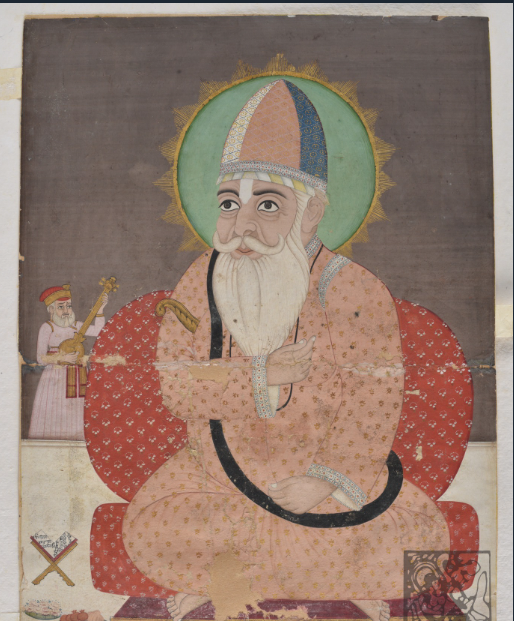
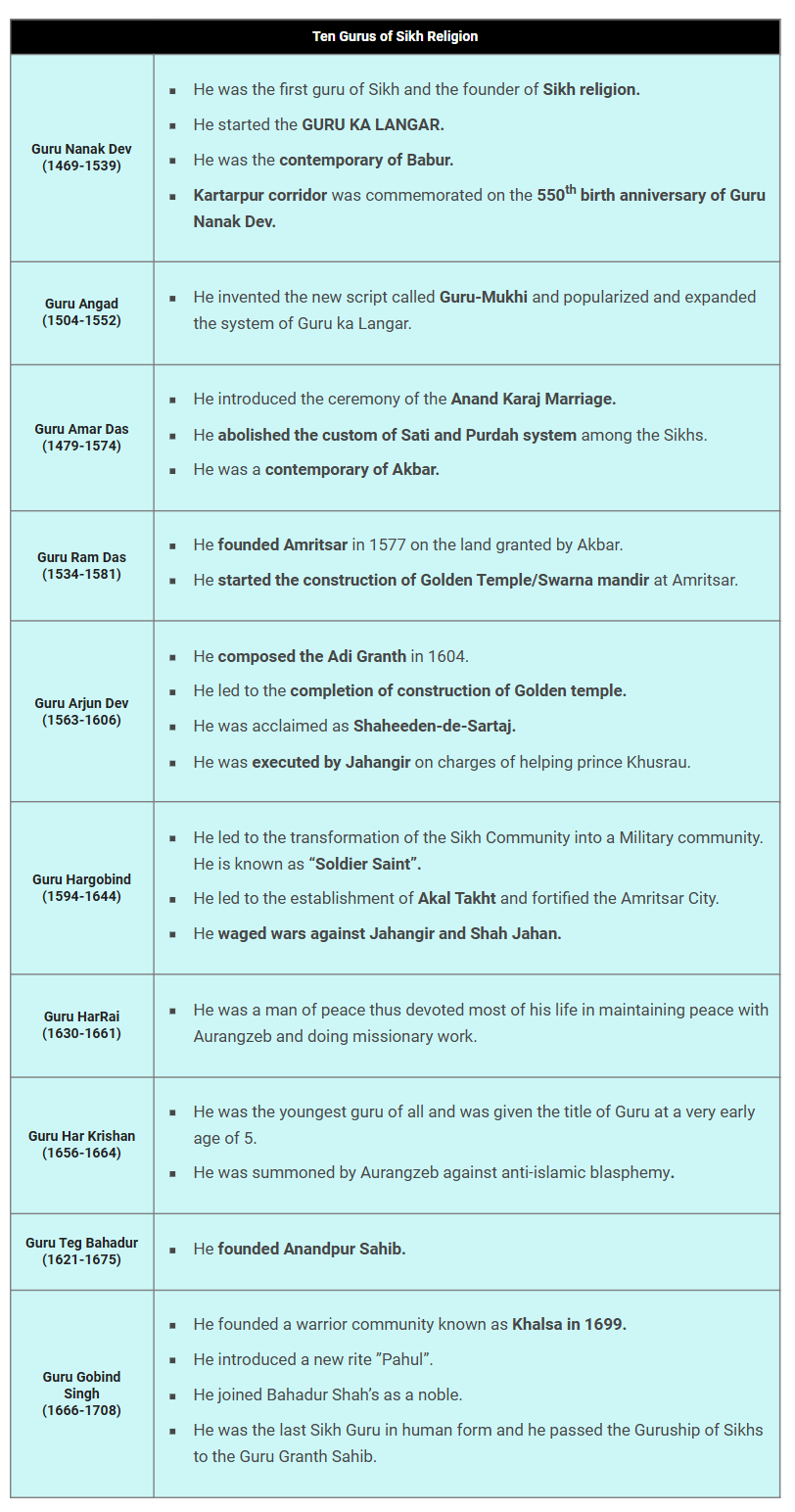
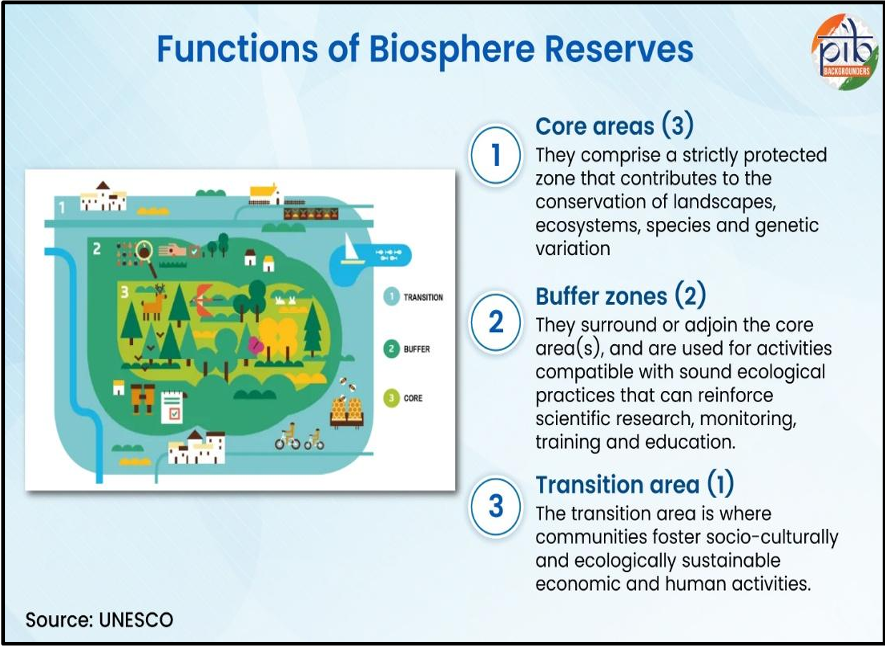
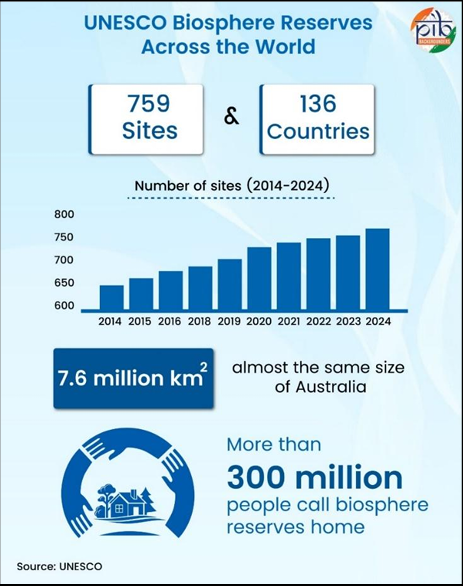
.png)

